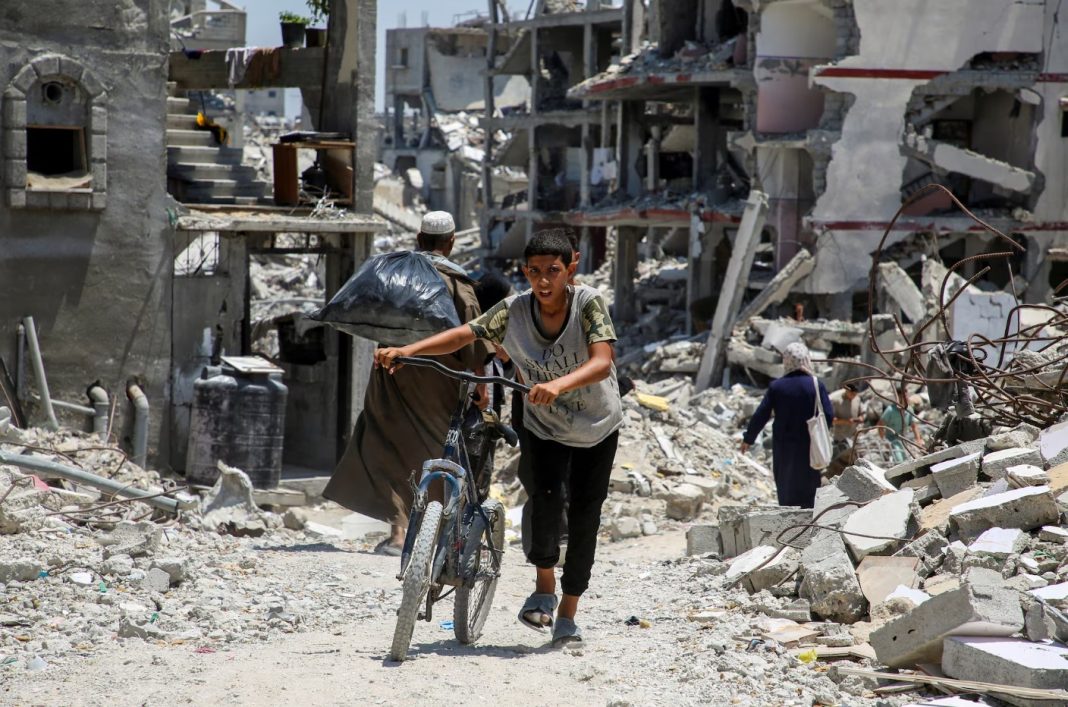The conclusions will underline the immense challenge of rebuilding the Palestinian territory after months of a grinding Israeli offensive that has led to massive destruction of homes and infrastructure.
According to the assessment, which was published last month by the UN Environment Programme, 137,297 buildings had been damaged in Gaza, more than half of the total. Of these, just over a quarter were destroyed, about a 10th severely damaged and a third moderately damaged.
Massive landfill sites covering between 250 and 500 hectares (618 to 1,235 acres) would be necessary to dump the rubble, depending on how much could be recycled, the assessment found.
In May, the UN Development Programme (UNDP) said rebuilding homes in Gaza destroyed during the war could take until 2040 in the most optimistic scenario, with total reconstruction across the territory costing as much as $40bn. That assessment, which was published as part of a push to raise funds for early planning for the rehabilitation of Gaza, also found the conflict could reduce levels of health, education and wealth in the territory to those of 1980, wiping out 44 years of development.
“The damage to infrastructure is insane … In [the southern Gaza City] Khan Younis, there is not one building untouched,” one UN official based in Gaza told the Guardian last week.
“The actual topography has changed. There are hills where there were none. The 2,000lbs [907kg] bombs dropped [by Israel] are actually altering the landscape.”
Schools, health facilities, roads, sewers and all other critical infrastructure have all suffered massive damage.
The UNDP noted the possible price tag of reconstruction of Gaza is now twice estimates made by UN and Palestinian officials in January and was rising every day.
The mountains of rubble are full of unexploded ordnance that leads to “more than 10 explosions every week”, causing more deaths and loss of limbs, Gaza’s Civil Defence agency has said.
In April, Pehr Lodhammar, a former United Nationals Mine Action Service chief for Iraq, said that on average about 10% of weapons failed to detonate when they were fired and had to be removed by demining teams.
Sixty-five per cent of the buildings destroyed in Gaza were residential, Lodhammar continued, adding that clearing and rebuilding them would be slow and dangerous work because of the threat from shells, missiles or other weapons buried in collapsed or damaged buildings.
The war began when Hamas launched a surprise attack into southern Israel in October, killing 1,200 people. More than 38,500 people have now been killed in Israel’s offensive in Gaza, according to Palestinian officials in the territory.
